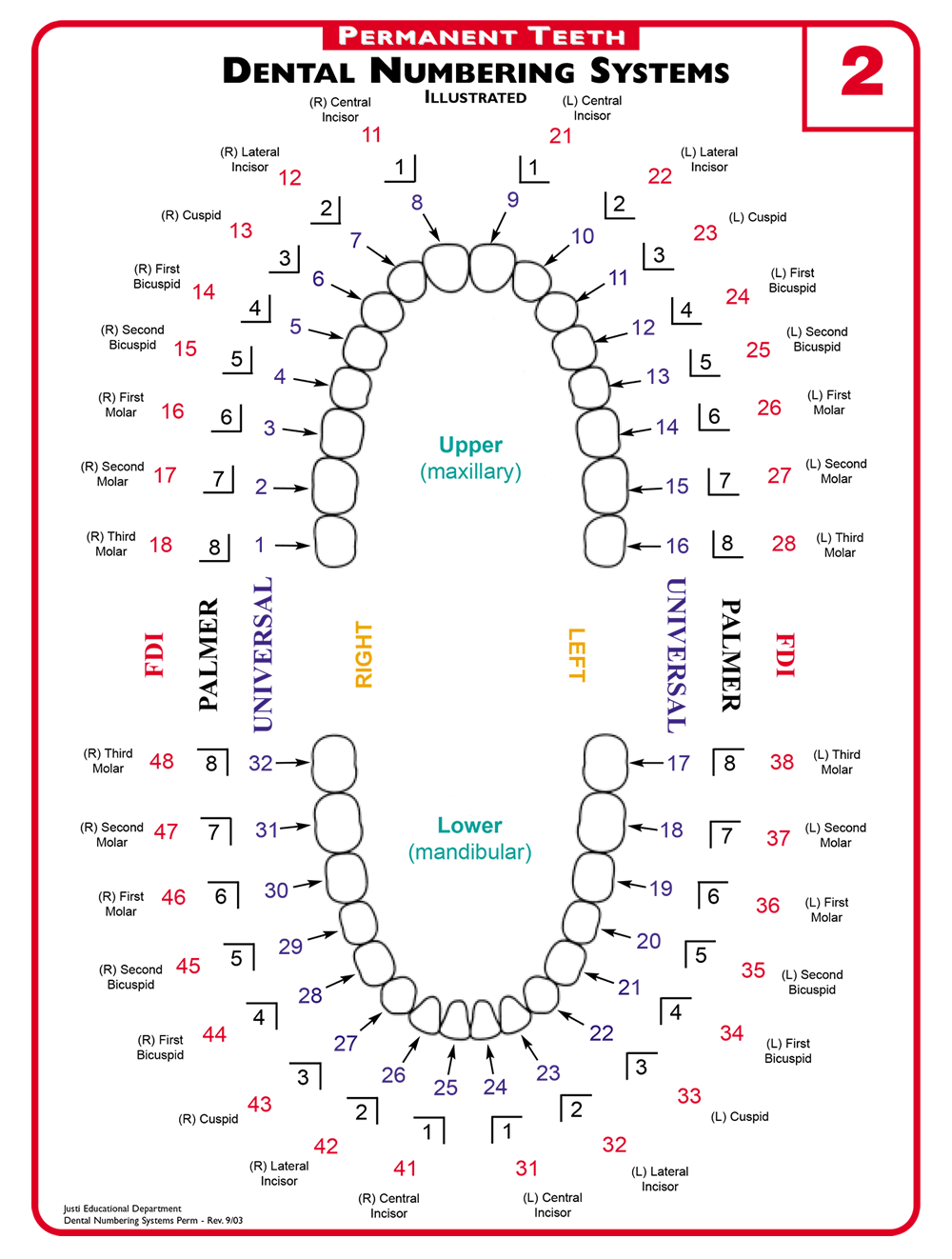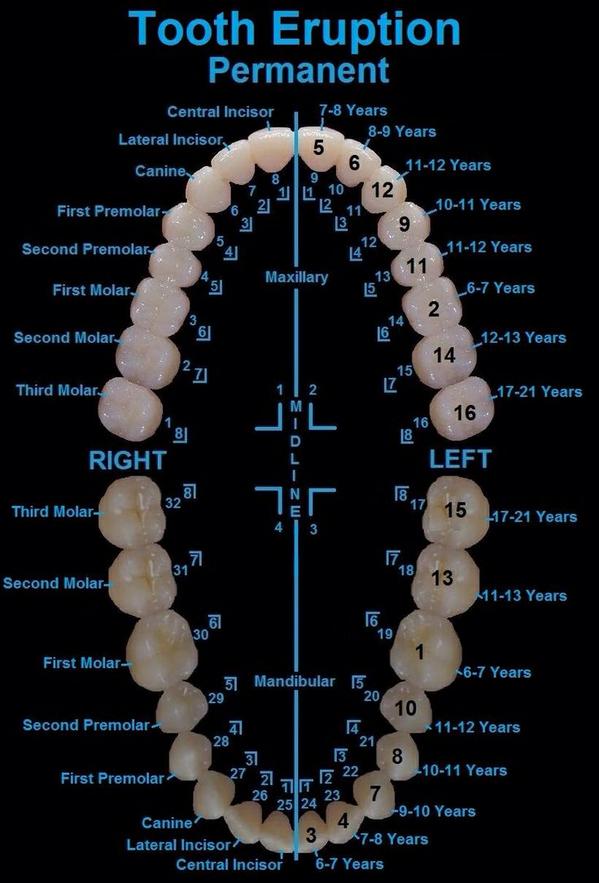
If they’re deeper than 7 mm, surgery may be required.
#DENTIST TEETH NUMBERS PROFESSIONAL#
If your measurement are any of the above, it may be recommended that you have professional cleanings at least every 3-4 months in order to improve both your gum health and overall oral health. Surgical intervention may be appropriate to resolve the disease. Explore the guidelines below to see what’s commonly interpreted from each depth.ģ mm - 5mm with no bleeding: Gum pockets of this depth could indicate a likelihood of gum disease.ģ mm - 5 mm with bleeding: It’s very likely that gums with these measurements have early gum disease.ĥ mm - 7 mm with bleeding: Besides almost certain gum disease, bone loss and tissue damage are also possible.ħ mm+ with bleeding: Pockets deeper than 7 mm means advanced gum disease is certain.

Higher measurements than 3 could be a sign of a serious concern. However, if you bleed during the process, your gums may be in beginning stages of a more severe problem, even if your measurements are between the target of 1 and 3.

Anything between 1 and 3 is a good indicator that your gums are healthy. These numbers reflect how deep your gum pockets are in millimeters. What Do The Numbers Mean?ĭuring the measuring process, you’ll hear us say numbers ranging from 1 to 7, and sometimes more. There are six sides per tooth to measure, that’s why you’ll hear so many numbers being called out.

What we do at our dental office in Columbia during periodontal charting is measure gum tissue around each tooth. This charting is helpful when evaluating overall oral health and can give your dental team some insight to a proper treatment plan. If you’ve ever been to your dentist in Columbia and experienced several gentle pokes to your gums followed by hearing some numbers, you’ve had what’s called a periodontal charting.


 0 kommentar(er)
0 kommentar(er)
